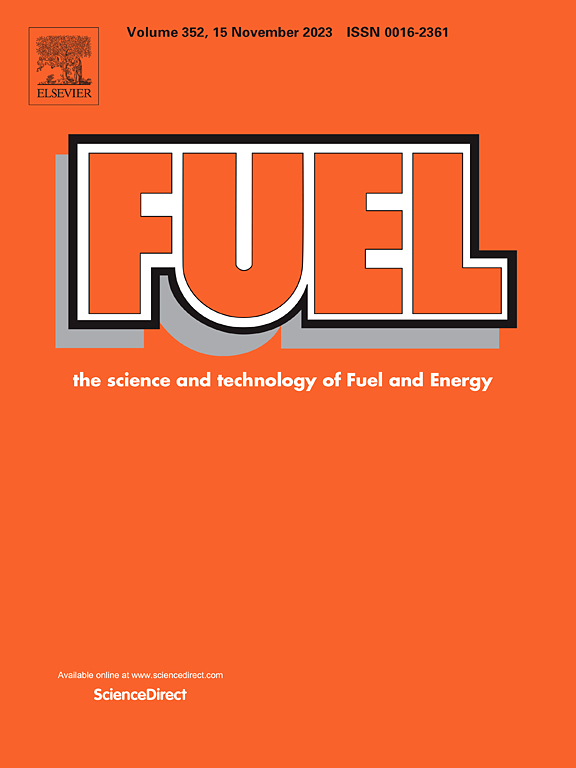A novel method for identifying oil content and moveable thresholds in heterogeneous shales
IF 6.7
1区 工程技术
Q2 ENERGY & FUELS
引用次数: 0
Abstract
The exploitation of shale oil is one of the most crucial strategies for alleviating energy shortages, and identifying high-quality oil content sweet spots is a top priority. The common oil content evaluation models typically apply a relatively fixed oil rich threshold and an oil moveable threshold as constraints. However, the high degree of heterogeneity of terrestrial shales means that the accuracy and practicality still require improvement. Here the ΔQ value was introduced to distinguish whether the shale is receiving or expelled hydrocarbon, and validated the comparison using geologic and geochemical data from these two types of shale. Based on the realization that hydrocarbon-accepting shales have high oil content and mobility, first-level and second-level oil quality thresholds are divided and identified, which represent the boundaries of oil quality from poor to good. The application of this model was demonstrated using 225 continuously cored shale samples from the Shahejie Formation of the Dongpu Depression in the Bohai Bay Basin. The results showed that three resource quality tiers were defined: high-quality (S1 ≥ 3.77 mg/g & OSI ≥ 235 mg/g TOC, 12 % of total resources), medium (0.75 mg/g ≤ S1 < 3.77 mg/g & 94 mg/g TOC ≤ OSI < 235 mg/g TOC, 32.44 % of total resources) and poor (S1 < 0.75 mg/g & OSI < 94 mg/g TOC, 55.56 % of total resources). ΔQ can be used as a constraint to quickly and accurately identify the oil quality threshold for strongly heterogeneous shale, thus avoiding the complex process of analyzing the influencing factors. In addition, this study found that high-quality shale oil is generally found in received hydrocarbon shale, which mainly exhibit laminated-carbonate lithofacies, and a high frequency interlayering or fracture development. In particular, the expelled hydrocarbon shale’s hydrocarbon generation potential and expelled hydrocarbon efficiency together determine oil quality. Overall, this study is expected effectively reduce potential shale oil exploration risks.
一种识别非均质页岩含油量和可动阈值的新方法
页岩油的开发是缓解能源短缺最关键的策略之一,确定高质量的含油量甜点是重中之重。常用的含油量评价模型通常采用相对固定的富油阈值和可动油阈值作为约束条件。然而,陆相页岩的高度非均质性意味着其准确性和实用性仍有待提高。本文引入ΔQ值来区分页岩是吸出烃还是吸出烃,并利用两类页岩的地质和地球化学数据进行对比验证。在认识到含烃页岩具有高含油量和高流动性的基础上,划分并识别了一级和二级油质阈值,代表了油质由差到好的界限。以渤海湾盆地东濮凹陷沙河街组225个连续取心页岩样品为例,验证了该模型的应用。结果表明:资源质量分为3个等级:高质量(S1≥3.77 mg/g;OSI≥235 mg/g TOC,占总资源量的12%),培养基(0.75 mg/g≤S1 <;3.77 mg/g;94 mg/g TOC≤OSI <;235 mg/g TOC,占总资源的32.44%)和较差(S1 <;0.75 mg/g;OSI & lt;94 mg/g TOC,占总资源量的55.56%)。利用ΔQ作为约束,可以快速准确地识别强非均质页岩的油质阈值,从而避免了分析影响因素的复杂过程。此外,研究还发现,优质页岩油普遍存在于接收到的烃页岩中,主要表现为层状-碳酸盐岩岩相,且层间或裂缝发育频率较高。其中,排烃页岩的生烃潜力和排烃效率共同决定了油品质量。综上所述,本研究有望有效降低页岩油勘探潜在风险。
本文章由计算机程序翻译,如有差异,请以英文原文为准。
求助全文
约1分钟内获得全文
求助全文
来源期刊

Fuel
工程技术-工程:化工
CiteScore
12.80
自引率
20.30%
发文量
3506
审稿时长
64 days
期刊介绍:
The exploration of energy sources remains a critical matter of study. For the past nine decades, fuel has consistently held the forefront in primary research efforts within the field of energy science. This area of investigation encompasses a wide range of subjects, with a particular emphasis on emerging concerns like environmental factors and pollution.
 求助内容:
求助内容: 应助结果提醒方式:
应助结果提醒方式:


